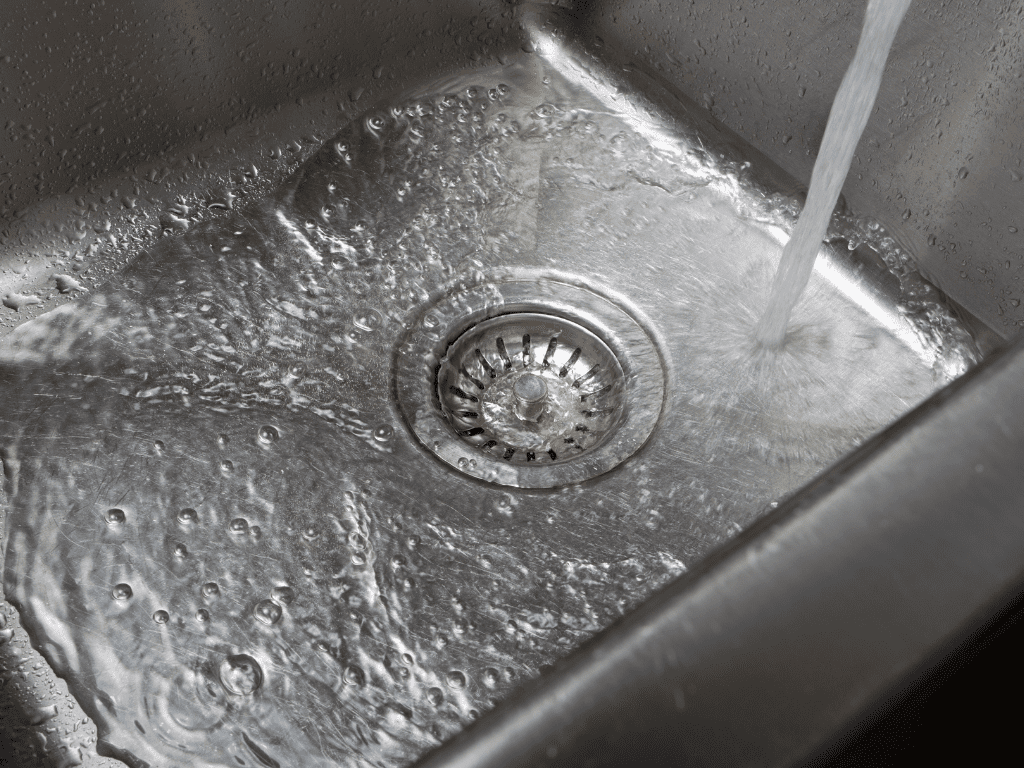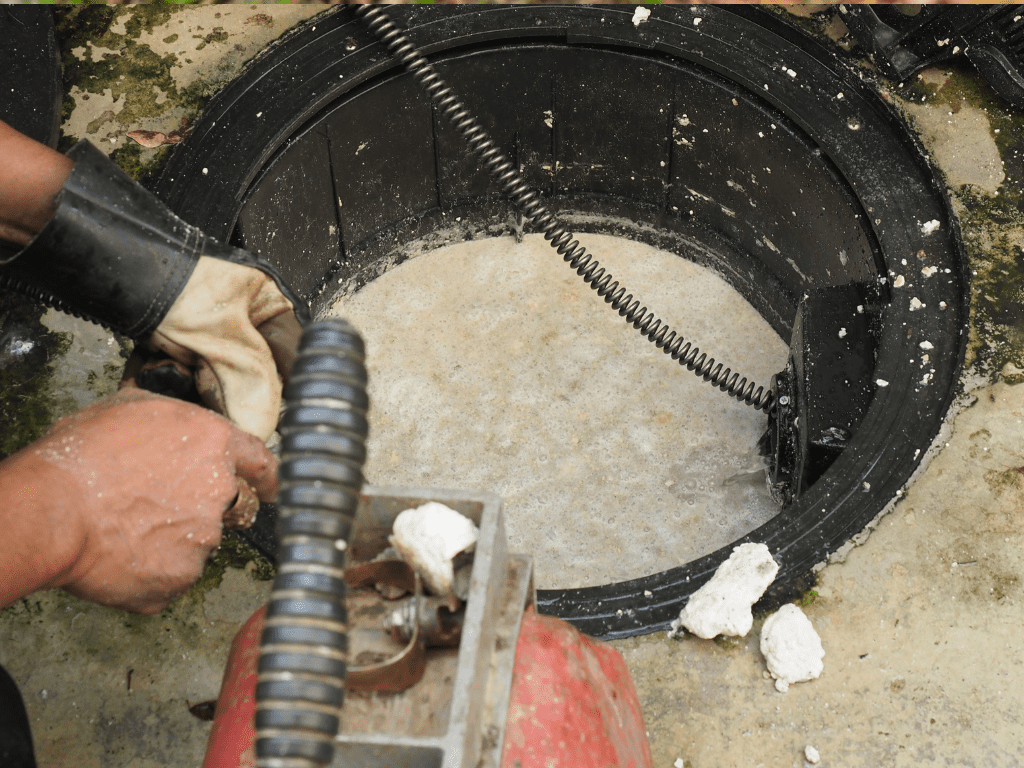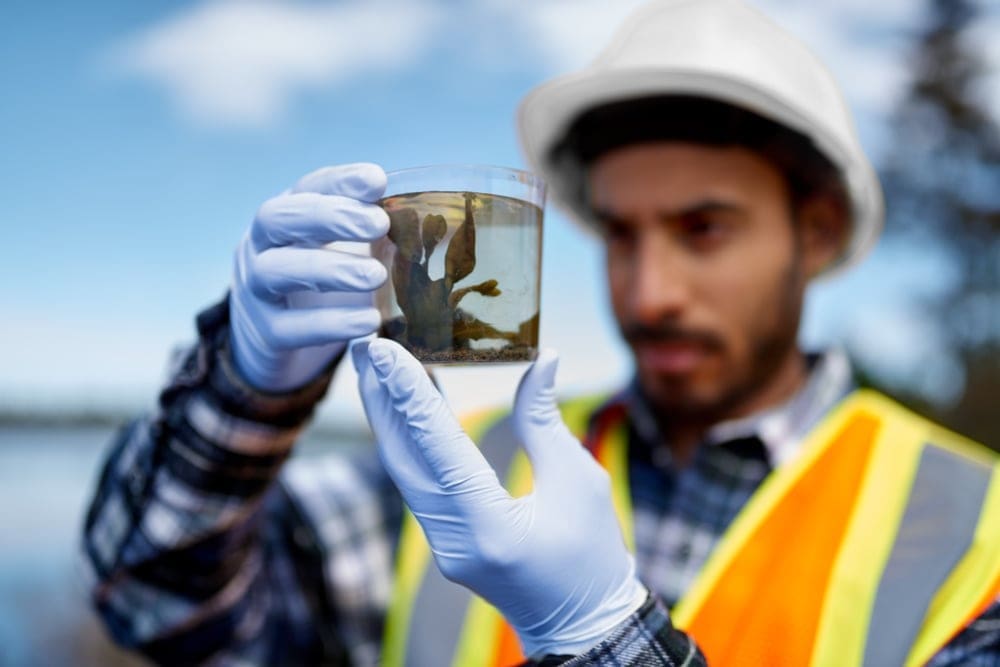The degassing process is crucial in various industries to ensure product quality and operational efficiency. This procedure can be significantly enhanced using AQUAQUICK 2000, a versatile and environmentally safe biodegradable degreaser. In this article, we will delve deep into the efficiency of ultrasonic degassing and elucidate why AQUAQUICK 2000 biodegradable degreaser stands out as the preferred choice for this application. We will explore the science behind ultrasonic degassing, the role of AQUAQUICK 2000 biodegradable degreaser, and its applications in different industries.
The Importance of Biodegradable Degreaser
Degassing is the process of removing dissolved gases or suspended gas bubbles from liquids such as biodegradable degreaser. This procedure is essential across a wide range of industries, including pharmaceuticals, food and beverages, oil and gas, and polymers. The presence of gas bubbles can cause inaccuracies in measurements, affect product quality, and lead to operational inefficiencies.
Key Applications of biodegradable degreaser
- Sample Preparation: Degassing ensures accuracy in particle-size measurements by eliminating errors caused by gas bubbles. This is particularly important in scientific research and quality control processes. Accurate measurements are crucial in research and development, as well as in manufacturing, where precision can impact the overall quality of the product.
- Oil and Lubricant Degassing: Removing gases from oils and lubricants reduces wear on pumps due to cavitation, enhancing the longevity and efficiency of mechanical systems. Cavitation can cause significant damage to pump components, leading to increased maintenance costs and potential system failures.
- Liquid Foods Processing: In products like wine, juice, and sauces, degassing inhibits microbial growth, thereby extending shelf life and maintaining product quality. Microbial growth can spoil food products, leading to wastage and financial loss. Effective degassing ensures that these products remain safe for consumption over a longer period.
- Polymers and Varnishes: Degassing is critical for curing and application processes, ensuring the quality and longevity of the final product. Air bubbles in polymers and varnishes can result in defects, affecting the appearance and durability of the finished product.
Ultrasonic Degassing: A Technological Leap On Biodegradable Degreasers
Degassing through ultrasonication is a cutting-edge method that uses sound waves to efficiently remove suspended gas bubbles and reduce dissolved gas levels. Ultrasonic degassing offers several advantages over traditional methods, such as filtering, helium sparging, and vacuum degassing.
How Ultrasonic Degassing Works?
Ultrasonic degassing involves the use of high-frequency sound waves to create alternating high and low-pressure cycles in a liquid. During the low-pressure cycles, vacuum bubbles form, which then collapse during the high-pressure cycles. This process, known as cavitation, increases the surface area for gas absorption, accelerates bubble growth, and facilitates the release of trapped gas to the surface.
Benefits of Ultrasonic Degassing
- Efficiency: Ultrasonic degassing is highly effective at removing gases, reducing the time and energy required compared to traditional methods. This efficiency translates to lower operational costs and increased productivity.
- Precision: The method allows for precise control over the degassing process, ensuring consistent results. Precision is crucial in industries where even minor deviations can impact product quality or safety.
- Versatility: Ultrasonic degassing can be applied to a wide range of liquids, making it suitable for diverse industrial applications. This versatility means that a single degassing method can be used across multiple processes, simplifying operations and reducing the need for multiple systems.
AQUAQUICK 2000 Biodegradable Degreaser: Enhancing Degassing Efficiency
AQUAQUICK 2000 is a unique biodegradable degreaser that significantly enhances the efficiency of the ultrasonic degassing process. Its innovative formulation not only aids in degassing but also offers environmental benefits, making it an ideal choice for industries seeking sustainable solutions.
Key Features of AQUAQUICK 2000 Biodegradable Degreaser
- Biodegradability: AQUAQUICK 2000 is environmentally friendly, breaking down into non-toxic components that do not harm the ecosystem. This makes it a responsible choice for industries aiming to minimize their environmental footprint.
- High Absorption Capacity: The product has 25% more absorption capacity compared to conventional absorbents, ensuring more effective degassing. This high absorption rate means that less product is needed to achieve the desired results, making it a cost-effective solution.
- Microbe-Enhanced: AQUAQUICK 2000 is microbe-enhanced to bioremediate certain pollutants, providing a dual function of degassing and pollutant removal. This feature adds an extra layer of environmental protection, addressing both immediate and long-term contamination issues.
Application in Degassing

AQUAQUICK 2000 can be seamlessly integrated into various degassing processes, including:
- Sprinkler System Integration: AQUAQUICK 2000 can be applied via a sprinkler system in pre-wash stages, effectively preparing the area for degassing. This method ensures even distribution of the degreaser, optimizing the preparation process.
- Vacuum Degassing: The product works exceptionally well with vacuum degassing techniques, removing over 95% of dissolved gases. This high efficiency reduces the need for multiple degassing stages, streamlining the process.
The Science of Sonication in Biodegradable Degreaser
Sonication, or ultrasonic degassing, relies on sound waves to facilitate the removal of gases from biodegradable degreaser. The process involves creating high and low-pressure cycles that lead to the formation and collapse of vacuum bubbles. This phenomenon, known as cavitation, enhances the degassing process by increasing the surface area for gas absorption and accelerating bubble growth using biodegradable degreaser .
Optimizing the Degassing Process

To maximize the efficiency of ultrasonic degassing, the following considerations are crucial:
- Minimize Turbulent Agitation: Reducing turbulence prevents the reintroduction of gas into the liquid, ensuring effective degassing by using a biodegradable degreaser. Turbulence can cause bubbles to break apart and dissolve back into the liquid, counteracting the degassing efforts.
- Use Shallow Containers: Shallow containers facilitate better sound wave propagation, enhancing the degassing process. Deeper containers can cause sound waves to dissipate, reducing their effectiveness.
- Heat the Liquid: Heating the biodegradable degreaser lowers gas solubility, making it easier to remove dissolved gases. Warmer biodegradable degreaser allow gases to escape more readily, improving the efficiency of the degassing process.
- Create a Vacuum Above the Liquid: Creating a vacuum above the liquid facilitates the escape of gas, improving degassing efficiency. A vacuum environment reduces the pressure above the liquid, encouraging gases to move from high-pressure areas within the liquid to the lower-pressure vacuum.
- Use Sonotrodes with Large Surface Areas: Sonotrodes with large surface areas ensure better wave transmission, optimizing bubble formation and gas release. Larger sonotrodes can generate more powerful sound waves, enhancing the overall effectiveness of the process.
- Apply Low to Moderate Amplitudes: Applying low to moderate amplitudes ensures optimal bubble formation and effective degassing without causing excessive turbulence. High amplitudes can create too much agitation, reintroducing gases into the liquid.
AQUAQUICK 2000 Biodegradable Degreaser in Tank Cleaning
AQUAQUICK 2000’s biodegradable degreaser versatility extends to tank cleaning applications. Its proven effectiveness in degassing makes it an invaluable tool in preparation for tank cleaning processes. Numerous successful deployments in tank cleaning projects attest to its efficacy and convenience.
Benefits of Using AQUAQUICK 2000 Biodegradable Degreaser in Tank Cleaning
- Enhanced Cleaning Efficiency: AQUAQUICK 2000 biodegradable degreaser improves the cleaning process by effectively removing gases and pollutants from tanks, ensuring thorough cleaning. Effective tank cleaning is crucial for maintaining the integrity and safety of storage systems.
- Environmental Safety: Being biodegradable, AQUAQUICK 2000 biodegradable degreaser is safe for the environment, reducing the ecological impact of tank cleaning operations. Traditional cleaning agents can leave harmful residues, but AQUAQUICK 2000 breaks down into harmless components.
- Cost-Effective: The high absorption capacity and efficiency of AQUAQUICK 2000 reduce the time and resources required for tank cleaning, making it a cost-effective solution. Efficient cleaning reduces downtime and maintenance costs, improving overall operational efficiency.
Non-Toxic Formulation
Another critical aspect contributing to its environmental safety is its non-toxic formulation. Traditional cleaning agents often contain toxic substances that can leach into soil, waterways, and affect wildlife. In contrast, AQUAQUICK 2000 biodegradable degreaser is engineered to be non-toxic, posing minimal risk to aquatic life, plants, and animals. This characteristic makes it suitable for use in sensitive environmental areas without compromising biodiversity or ecosystem health.
Zero Harmful Residues
AQUAQUICK 2000 biodegradable degreaser leaves zero harmful residues after use. This attribute is particularly significant in industries where residue accumulation can lead to long-term environmental contamination. By breaking down into harmless substances, AQUAQUICK 2000 biodegradable degreaser ensures that post-application residues do not pose risks to soil fertility, water quality, or human health, aligning with sustainable waste management practices.
Applications Across Industries

1. Oil and Gas Industry
In the oil and gas sector, AQUAQUICK 2000 plays a crucial role in degassing and cleaning operations. Its ability to efficiently remove contaminants and hydrocarbons from surfaces and equipment without leaving behind toxic residues makes it an ideal choice for maintaining environmental compliance in drilling sites, refineries, and storage facilities.
2. Manufacturing and Production
Manufacturing facilities utilize AQUAQUICK 2000 for cleaning and degreasing machinery, tools, and production lines. Its environmentally safe formulation ensures that industrial processes remain sustainable, minimizing environmental impact while enhancing operational efficiency.
3. Food Processing
AQUAQUICK 2000 is widely used in food processing plants to clean equipment, floors, and processing areas. Its non-toxic nature and biodegradability make it suitable for maintaining hygienic standards without compromising food safety or contaminating food products.
4. Marine and Offshore
In marine and offshore industries, where environmental sensitivity is paramount, AQUAQUICK 2000 offers an effective solution for cleaning vessels, docks, and offshore platforms. Its biodegradable properties ensure compliance with maritime environmental regulations, safeguarding marine ecosystems and biodiversity.
Environmental Certifications and Compliance
AQUAQUICK 2000 holds certifications and complies with regulatory standards that attest to its environmental safety and efficacy. These certifications include endorsements from environmental agencies and organizations that validate its performance in minimizing environmental impact across various applications.
Environmental certifications and compliance are crucial aspects that validate the environmental safety and efficacy of products like AQUAQUICK 2000. These certifications provide assurance to industries, regulators, and consumers that the product meets stringent environmental standards and regulations. Here’s a detailed exploration of environmental certifications and compliance as they relate to AQUAQUICK 2000:
Importance of Environmental Certifications
Environmental certifications serve several important purposes:
- Validation of Environmental Claims: Certifications validate claims made by manufacturers regarding the environmental attributes of their products. For AQUAQUICK 2000, certifications confirm its biodegradability, non-toxic formulation, and minimal environmental impact.
- Compliance with Regulations: Certifications ensure that products comply with local, national, and international environmental regulations. They demonstrate that AQUAQUICK 2000 meets or exceeds regulatory requirements for environmental safety and sustainability.
- Consumer Confidence: Certifications build trust and confidence among consumers, businesses, and regulatory agencies. They provide assurance that AQUAQUICK 2000 has undergone rigorous testing and assessment to confirm its environmental credentials.
Key Environmental Certifications for AQUAQUICK 2000
1. Biodegradability Certifications
Biodegradability certifications verify that AQUAQUICK 2000 breaks down into non-toxic components through natural processes within a specified timeframe. Common biodegradability standards include:
- OECD 301: Tests the biodegradability of substances in aerobic conditions over a period of several weeks.
- ISO 7827: Assesses the ultimate aerobic biodegradability of substances in aquatic environments.
These certifications confirm that AQUAQUICK 2000 poses minimal risk to ecosystems after use, aligning with sustainable waste management practices.
2. Non-Toxicity and Safety Certifications
Certifications related to non-toxicity ensure that AQUAQUICK 2000 does not contain substances harmful to human health or the environment. These certifications include:
- REACH Compliance: Ensures compliance with European Union regulations on the Registration, Evaluation, Authorization, and Restriction of Chemicals (REACH), which assesses the risks posed by chemicals and promotes their safe use.
- EPA Safer Choice: Recognizes products that meet stringent human and environmental health criteria set by the U.S. Environmental Protection Agency (EPA).
These certifications validate that AQUAQUICK 2000 can be used safely in diverse industrial and environmental settings without adverse effects.
3. Environmental Management Systems (EMS)
Some certifications focus on the overall environmental management practices of the manufacturer, ensuring that processes are aligned with sustainability principles. Examples include:
- ISO 14001: Certifies that the manufacturer has implemented an effective environmental management system to minimize environmental impact and comply with regulations.
- Eco-labels: Recognize products that meet specific environmental performance criteria, such as energy efficiency, resource conservation, and reduced emissions.
Certifications like ISO 14001 demonstrate the manufacturer’s commitment to environmental stewardship throughout the product’s lifecycle.
Compliance with Regulatory Standards
In addition to certifications, compliance with regulatory standards is essential for AQUAQUICK 2000:
- Environmental Regulations: AQUAQUICK 2000 complies with local, national, and international environmental regulations governing the use and disposal of cleaning agents and degreasers. This compliance ensures that the product does not contribute to environmental pollution or harm natural ecosystems.
- Safety Data Sheets (SDS): Provide detailed information on the composition, safe handling, and disposal of AQUAQUICK 2000, ensuring that users can safely manage the product throughout its lifecycle.
Benefits of Environmental Certifications for AQUAQUICK 2000
- Market Access: Certifications facilitate market access by demonstrating compliance with regulatory requirements in different regions and markets worldwide.
- Risk Mitigation: Certifications mitigate the risk of non-compliance and potential legal liabilities associated with environmental harm caused by cleaning agents.
- Environmental Leadership: By obtaining certifications, manufacturers of AQUAQUICK 2000 demonstrate environmental leadership and commitment to sustainable practices, enhancing their reputation and brand value.
Sustainable Practices and Corporate Responsibility
By choosing AQUAQUICK 2000, industries demonstrate their commitment to sustainable practices and corporate responsibility. The product’s ability to deliver high-performance cleaning results while safeguarding environmental health aligns with global sustainability goals and initiatives aimed at reducing industrial carbon footprints and promoting eco-friendly technologies.
AQUAQUICK 2000 stands as a testament to innovation in environmentally safe cleaning solutions. Its biodegradable formulation, non-toxic properties, and effective performance across diverse industrial sectors underscore its role as a preferred choice for environmentally conscious companies. By integrating AQUAQUICK 2000 into their operations, industries not only enhance operational efficiency and compliance but also contribute to a cleaner, healthier environment for present and future generations.

The adoption of AQUAQUICK 2000 represents a proactive step towards sustainable industrial practices, where environmental safety and performance go hand in hand. As industries continue to prioritize environmental stewardship, solutions like AQUAQUICK 2000 pave the way for a greener, more sustainable future.
AQUAQUICK 2000’s integration into the degassing process not only simplifies the operation but also ensures superior results. Its compatibility with various degassing methods, coupled with its environmental safety and efficacy, makes AQUAQUICK 2000 the go-to solution for industries seeking efficient and convenient degassing solutions. The product’s versatility and proven track record in enhancing degassing processes underscore its status as the number one choice in the market.
Conclusion: The Superior Choice for Degassing
In conclusion, the degassing process is vital for maintaining product quality and operational efficiency in various industries. Ultrasonic degassing has emerged as a cutting-edge method, offering significant advantages over traditional techniques. The use of AQUAQUICK 2000, a biodegradable degreaser, further enhances the efficiency and effectiveness of the degassing process. Its unique formulation, high absorption capacity, and environmental benefits make it an indispensable tool for industries looking to optimize their degassing operations.
By integrating AQUAQUICK 2000 into degassing processes, industries can achieve superior results while promoting environmental sustainability. Whether it’s for sample preparation, oil and lubricant degassing, liquid food processing, or tank cleaning, AQUAQUICK 2000 stands out as the preferred choice for efficient and convenient degassing solutions. The future of degassing is here, and it’s powered by the innovative and environmentally friendly AQUAQUICK 2000.














